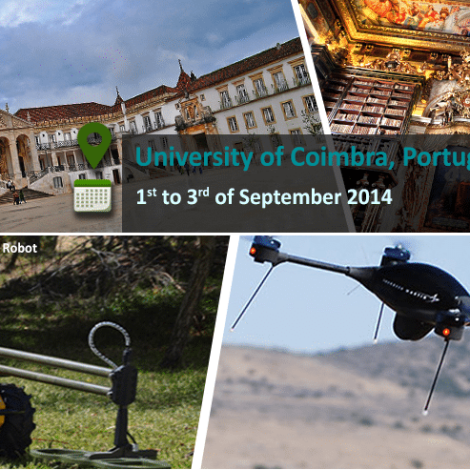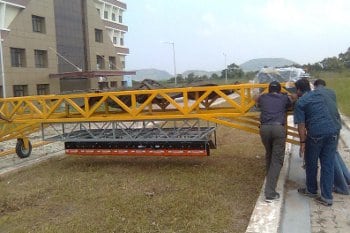A competition to develop autonomous landmine detectors has fused the awesomeness of robots with the dire need to raise awareness of one of the world’s deadly legacies of war. Now in its third year, Minesweepers: Towards a Landmine-free World, combines homegrown robotics with metal detectors and mini vehicles that fly or roll over rough terrain mapping mines.
The entries really have been eye opening. For proof, take a look at these two videos of machines in last year’s competition: the lumbering mini tank with side-mounted metal detectors, called the Asguard Minesweeper, by students at the German University in Cairo, and the low-flying Falco-O, by students at the University of Verona, Italy, that dangles its homemade metal detector just above the ground. Those are two among 79 entries in the regular competition and 12 in the junior challenge. We’re waiting to see how this year’s entries stack up. The application period ends May 31 and the competition takes place Sept. 1-3 at the University of Coimbra in Portugal.

Minesweepers’ organizers say the competition will foster research into robotics for humanitarian demining missions. We wanted to know what are the chances that the technology introduced there could go on to map real minefields.
The answer is that the odds might be good, considering the people backing this year’s competition, says Alaa Khamis, a senior research scientist at Vestec and an associate professor of robotics at Suez University, who is heading the competition. Those backers include the Egyptian chapter of IEEE Robotics and Automation Society, Hadath for Innovation and Entrepreneurship, Mines Action and Human Rights Foundation and the African Robotics Network, among others. And this year the Egyptian Ministry for Scientific Research is contributing a Prototype Grant to the winning teams to convert their robots into working prototypes for real minefield mapping missions.
[quote]Hot and dusty climates are a challenge. The robots need high-temperature electronic components, and many fail because they use traditional room-temperature electronics.[/quote]
Another factor that might propel Minesweepers’ robots into real-world applications is the rigor of the competition itself. The off-road, rural areas where landmines lie are reflected in the competition with a rough terrain field for the machines to navigate.
“Another challenge is the unpleasant sunny, hot and dusty climate that raises the need to use high-temperature and rigid electronic components. Many robots fail due to using traditional room-temperature electronics,” Khamis told E4C.
“Through this competition, the participants experience the fact that minefields are frequently strewn with small metal fragments, which can camouflage landmines and cause high false detection rate. Therefore, they learn how to put more emphasis on the discrimination power of the detection system to be able to differentiate between buried and surface mines and randomly scattered metal fragments,” Khamis says.
[quote]If demining efforts remain the same as they are now, and no new mines are laid, it will take 1100 years to clear the world’s minefields.[/quote]
Egyptian influence is strong in the competition and it’s fitting that Egypt is taking a leading role in researching demining technologies. Forty years after the end of armed hostilities with Israel, and 70 years after World War II, landmines and unexploded bombs cover 22 percent of Egypt’s surface. Worldwide, there may be as many as 100 million hidden explosives, killing or maiming more than 5000 people each year. But no country is more riddled with them than Egypt, which bears the burden of 20 percent of all of the mines in the world.
Minesweepers has picked up more interest this year, but the teams still work on shoestring budgets and have trouble finding financial backers. We’re hoping that the interdisciplinary technical challenge, and the fun of custom robotic vehicles, might pique more interest this year. The work is essential to save lives, mostly in developing countries, but it also has more everyday applications. Those can include security and surveillance, search and rescue, pipeline and environmental monitoring, among others.
But removing landmines is a priority. One of Minesweepers’s sobering calculations is that if demining efforts remain the same as they are now, and no new mines are laid, it will take 1100 years to clear the world’s minefields. So, best of luck to the robots.
For information on the challenge, please see the Minesweepers’ Website at landminefree.org, or their Facebook page.

